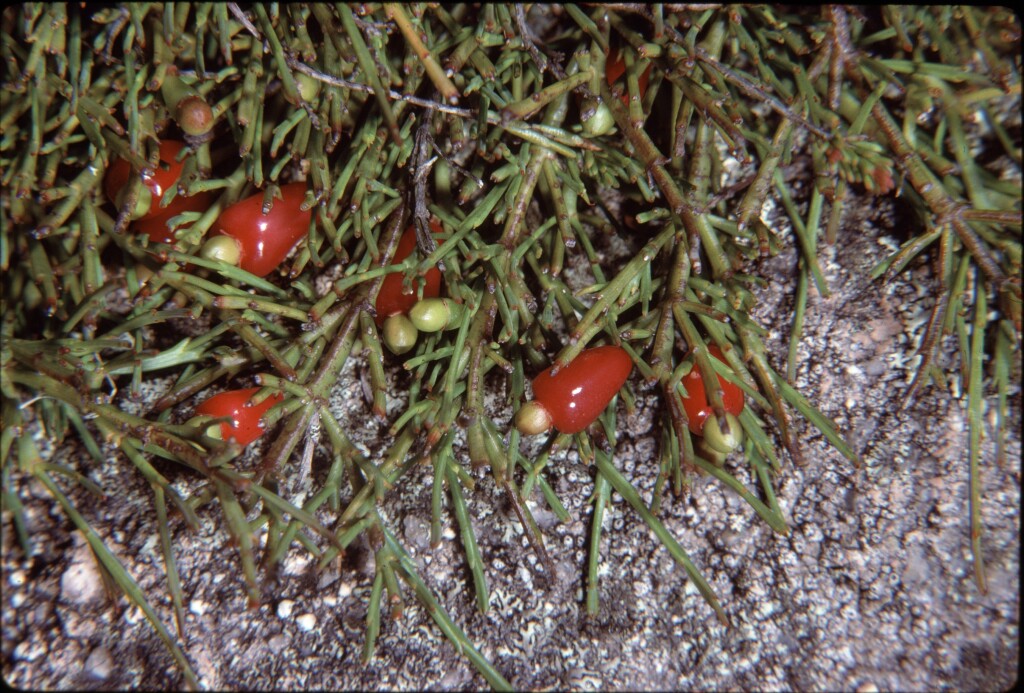Exocarpos nanus
Hook.f. Alpine BallartProstrate or ascending subshrub to c. 1 m diam.; branchlets slender, angular-striate, glabrous. Leaves opposite, scale-like, triangular, 0.5–1 mm long, obtuse, erect or spreading, persistent. Flowers 1–4, in sessile axillary clusters; tepals 5, triangular-ovate, c. 0.5 mm long, obtuse, yellow-green, sometimes tinged with red, persistent. Fruiting receptacle obovoid to obconical, 2–4 mm long, dark red, edible but not palatable; drupe ovoid, 2–3 mm long, green to red-brown. Flowers Sep.–Feb.
EGU, HSF, HNF, VAlp. Also NSW, ACT, Tas. Widespread but localized in the higher eastern ranges, usually at elevations higher than 1300 m, where it favours open heathlands and herbfields, often sprawling over rocks.
Jeanes, J.A. (1999). Exocarpos. In: Walsh, N.G.; Entwisle, T.J., Flora of Victoria Vol. 4, Cornaceae to Asteraceae, pp. 27–29. Inkata Press, Melbourne.
 Spinning
Spinning

